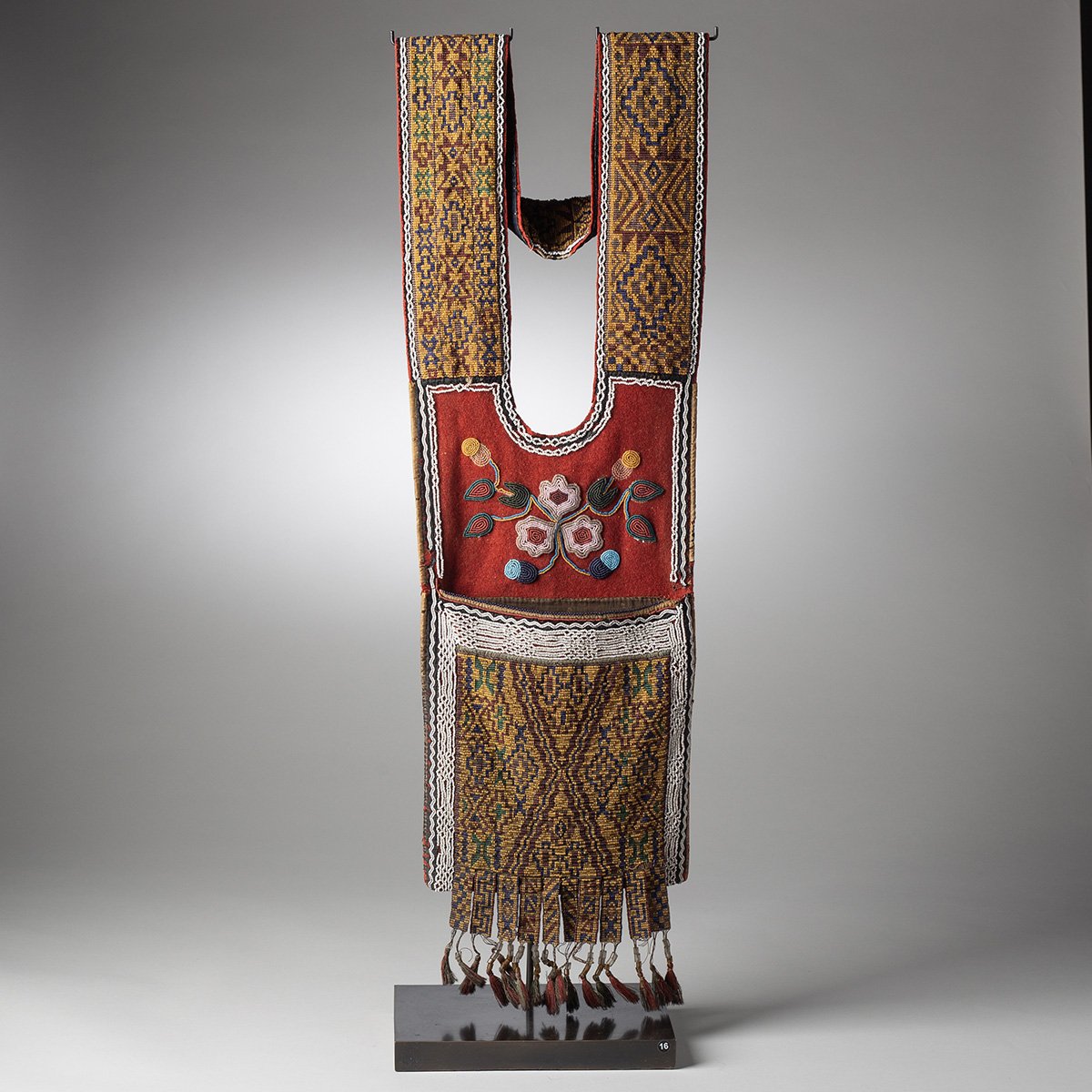 Image 1 of 10
Image 1 of 10

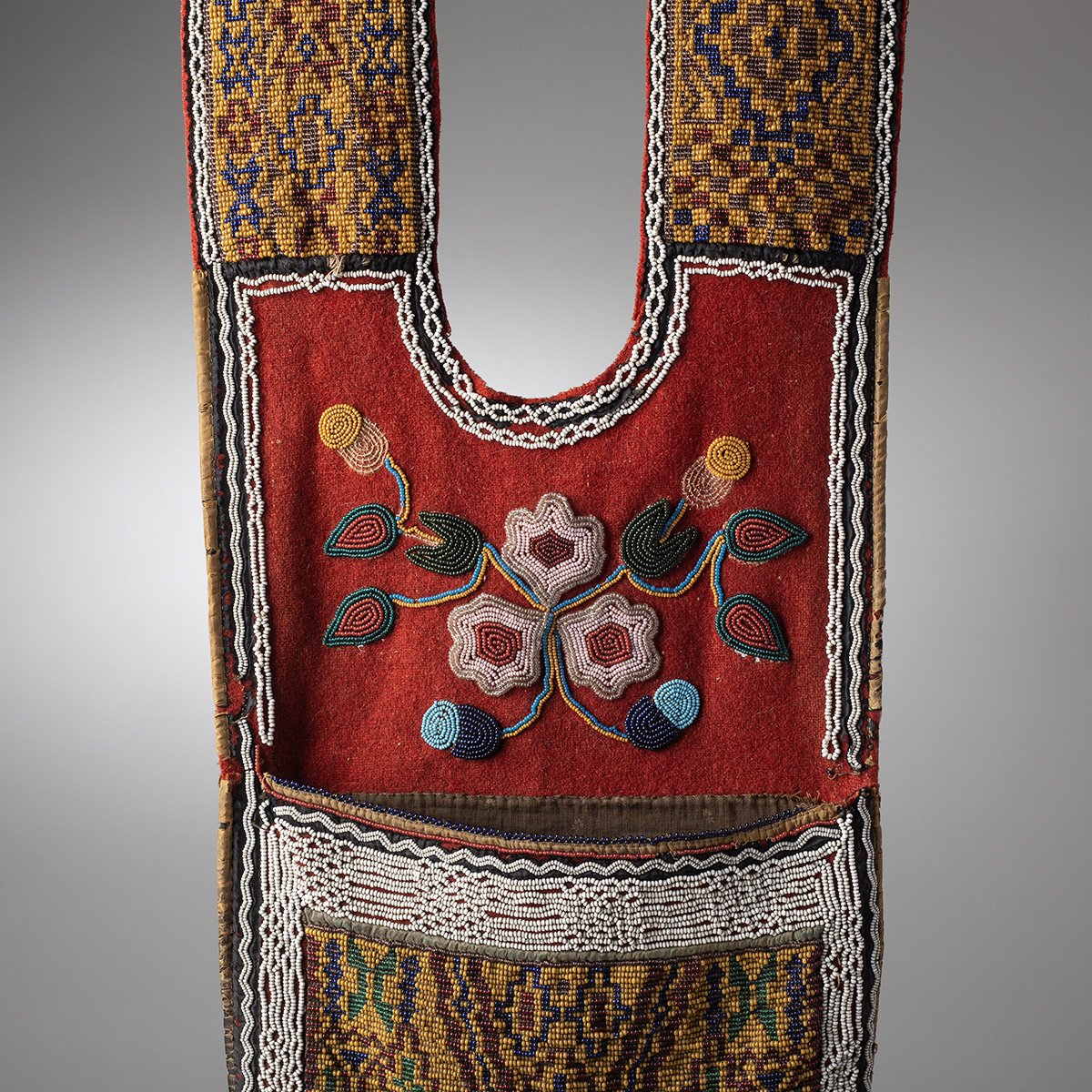 Image 2 of 10
Image 2 of 10

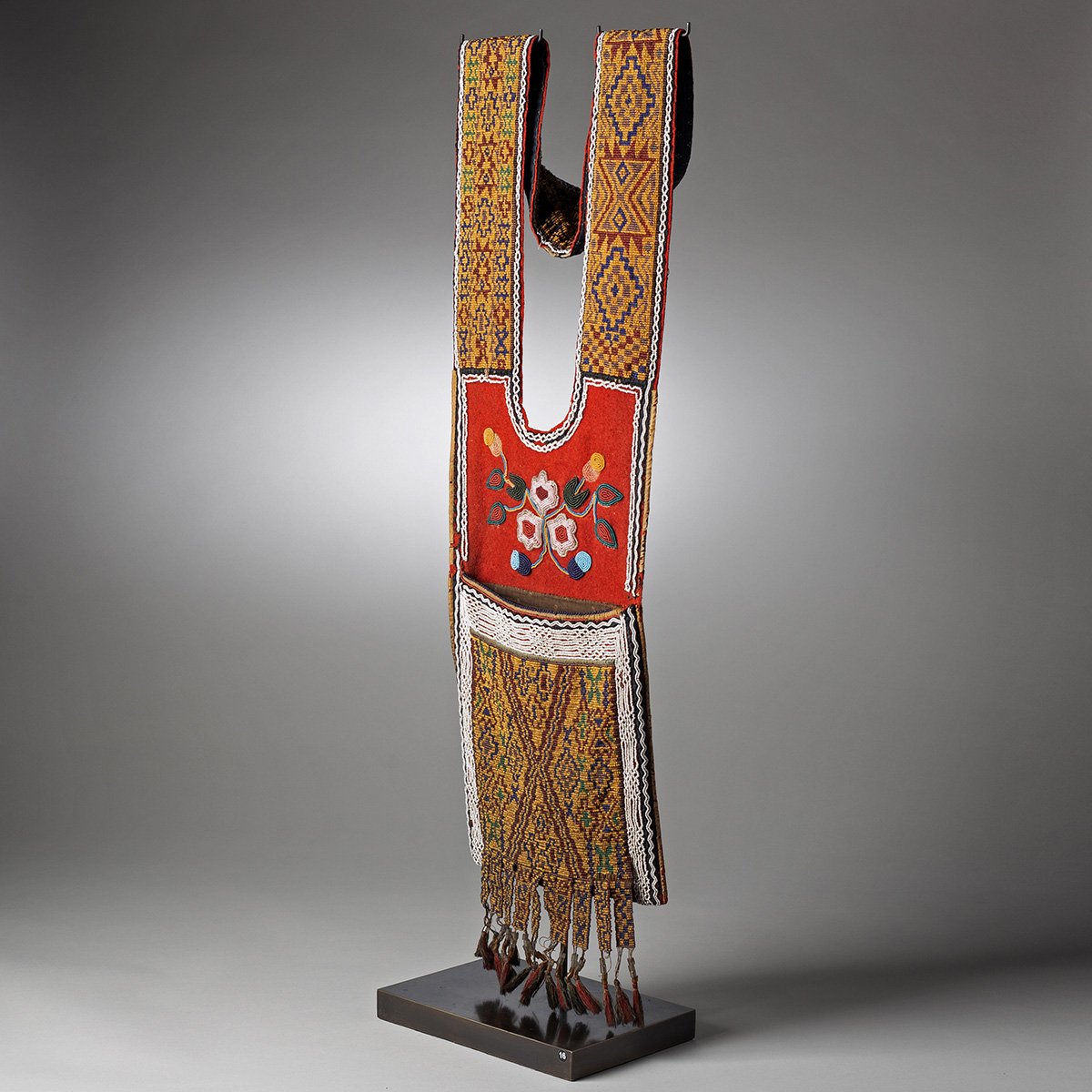 Image 3 of 10
Image 3 of 10

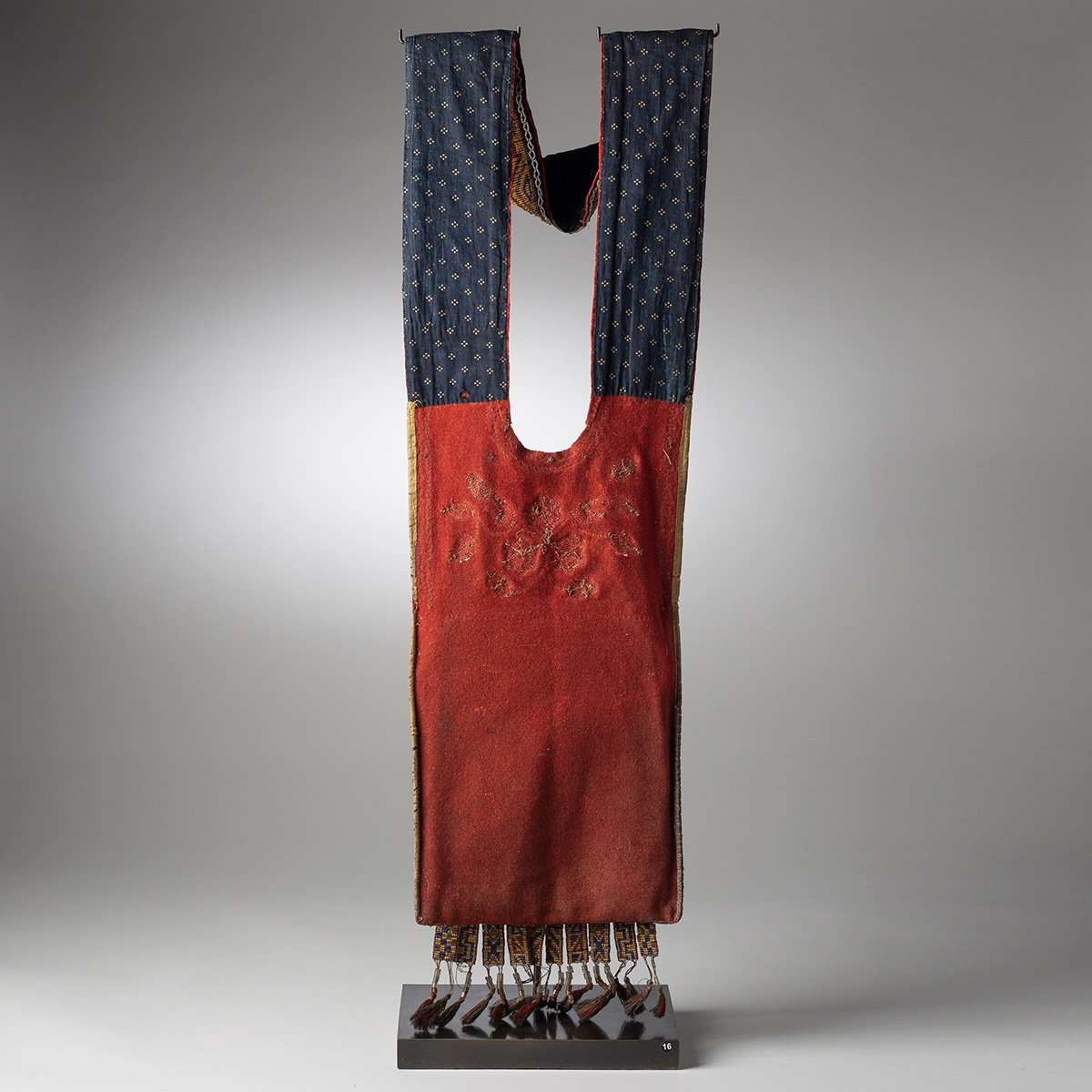 Image 4 of 10
Image 4 of 10

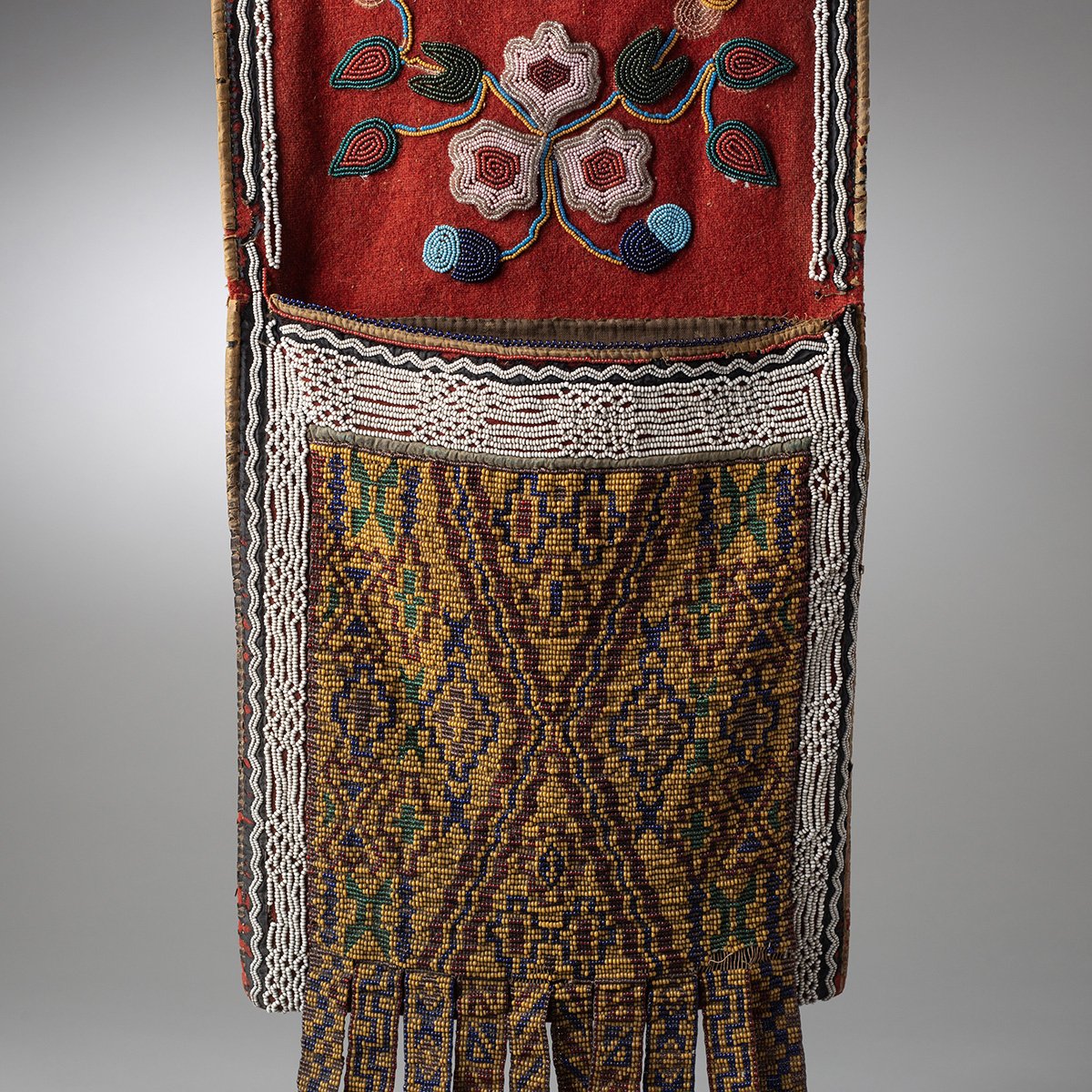 Image 5 of 10
Image 5 of 10

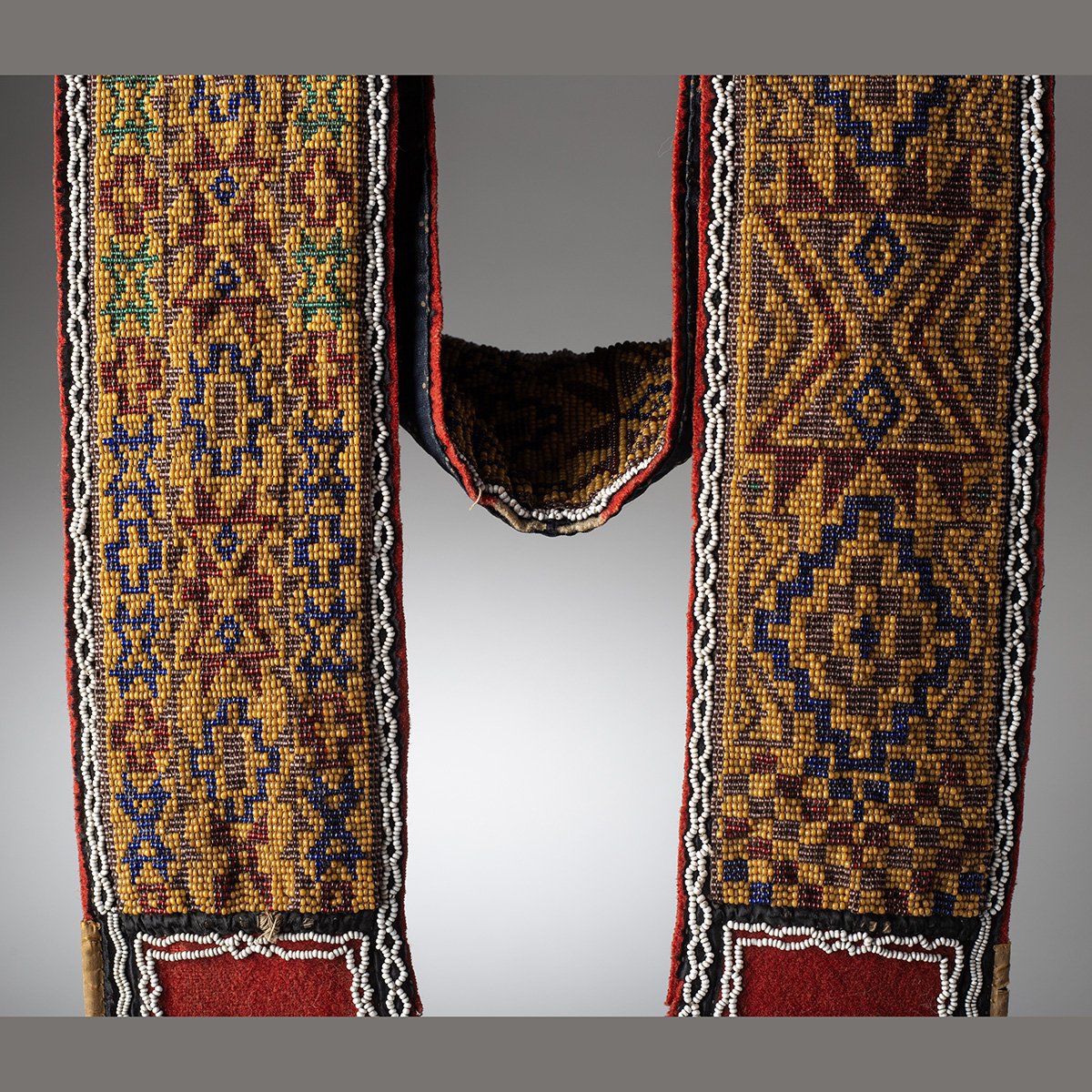 Image 6 of 10
Image 6 of 10

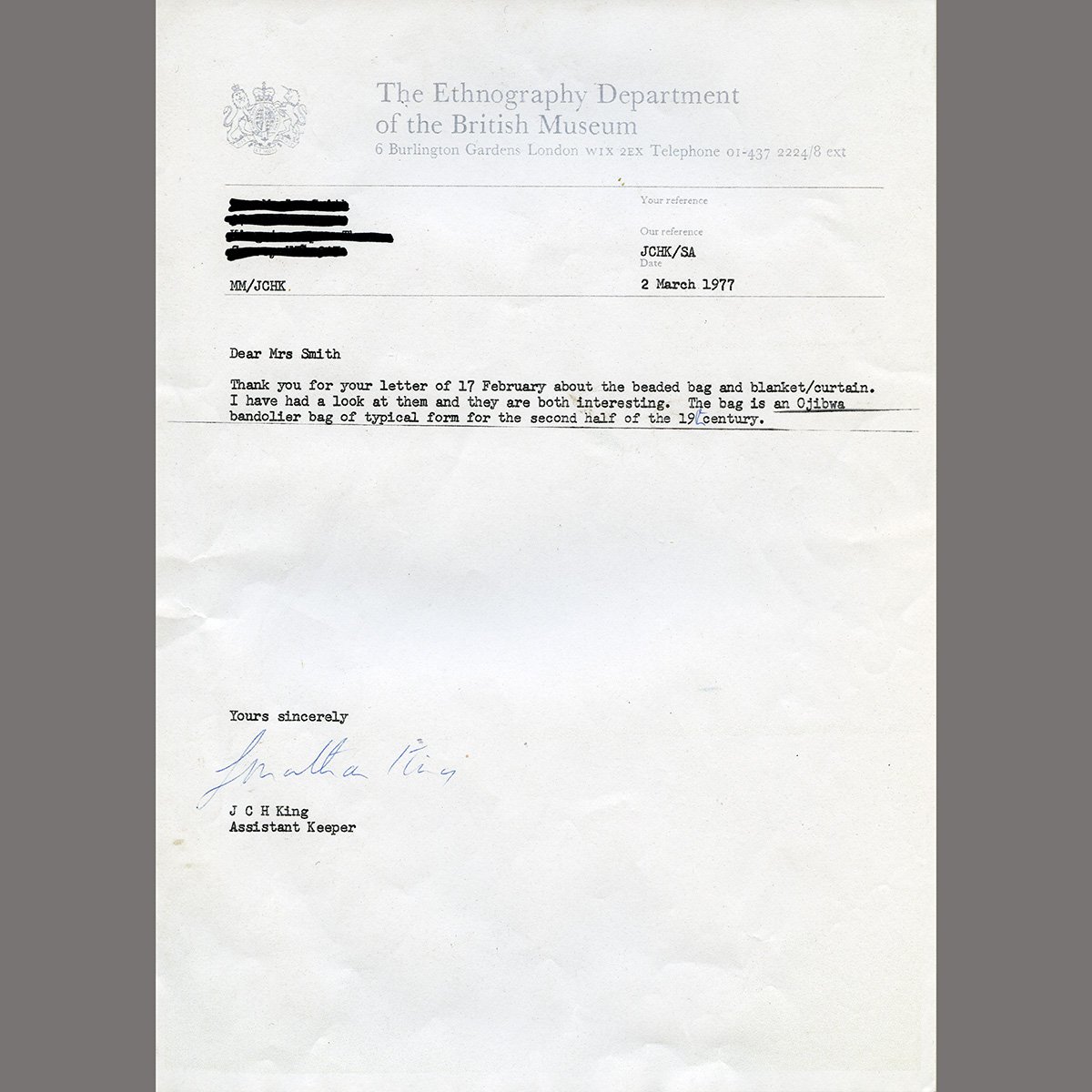 Image 7 of 10
Image 7 of 10

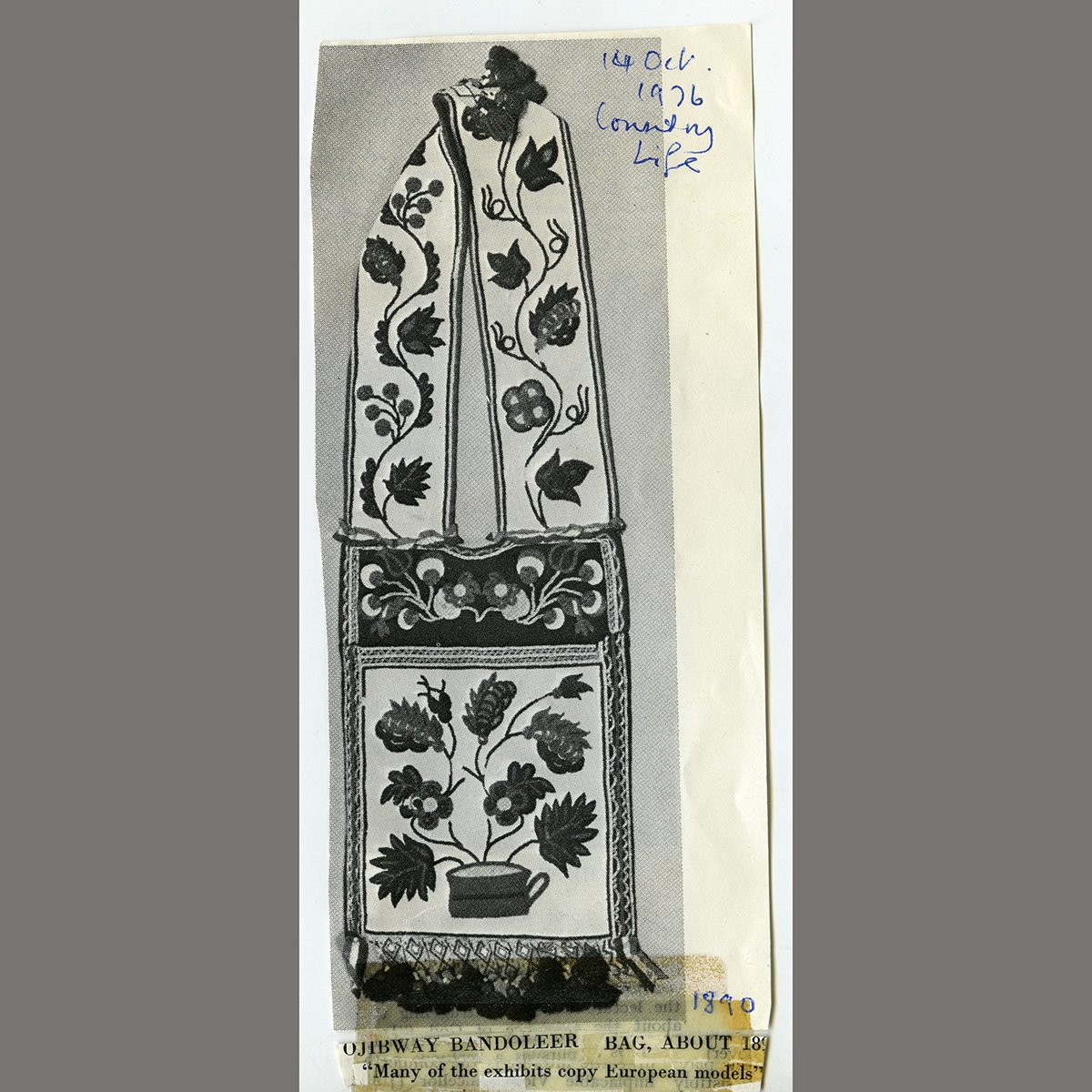 Image 8 of 10
Image 8 of 10

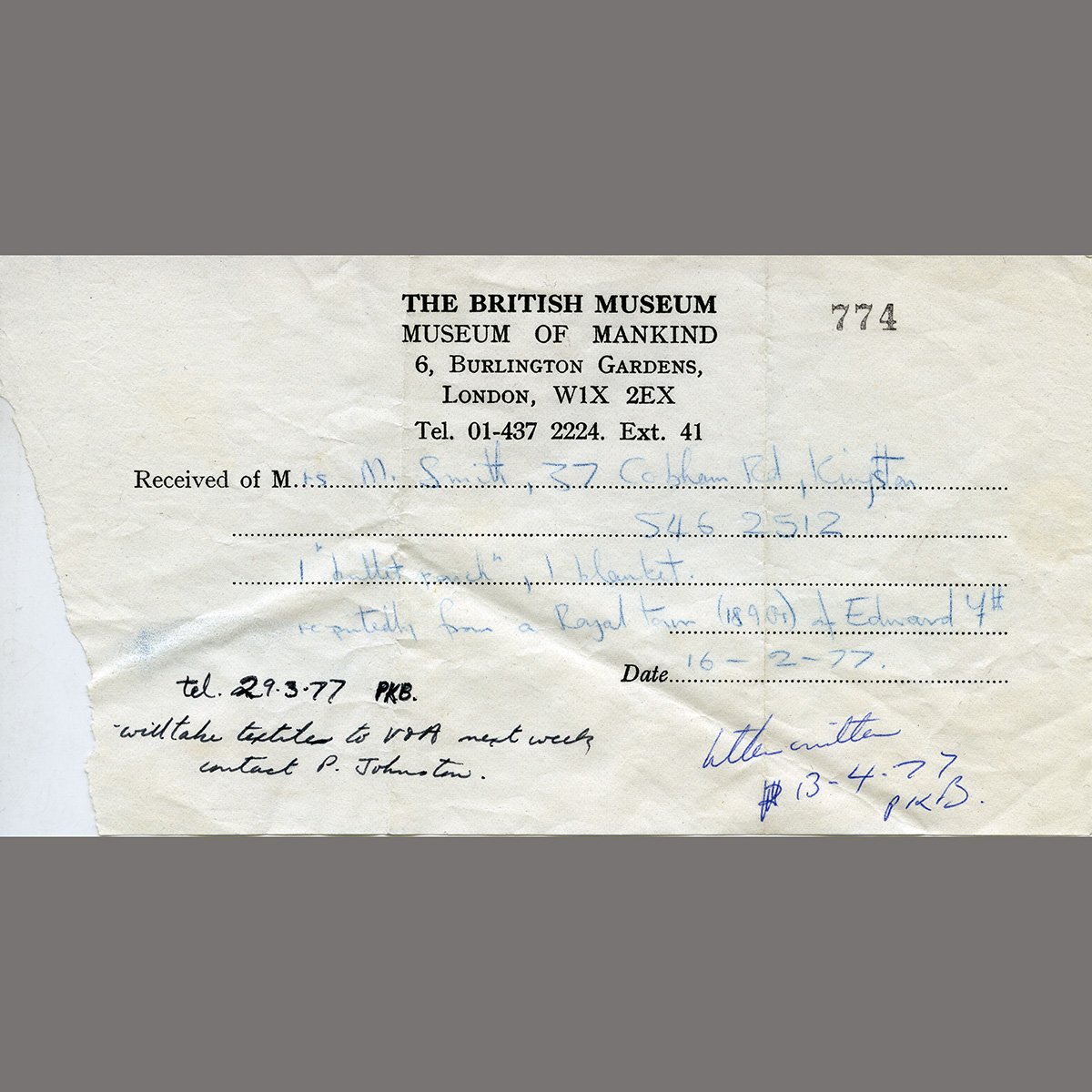 Image 9 of 10
Image 9 of 10

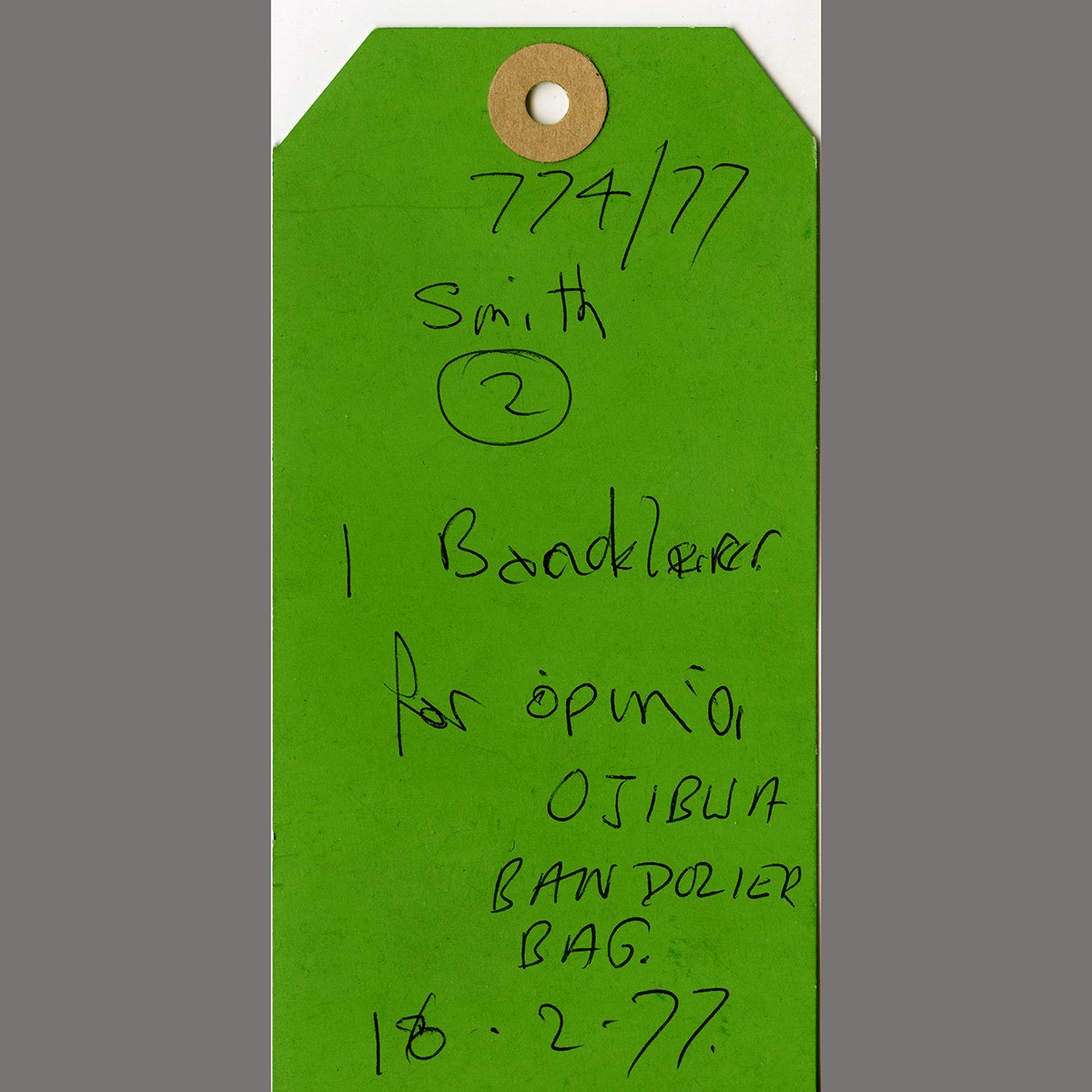 Image 10 of 10
Image 10 of 10











Superb Child's Great Lakes Bandolier Bag
Ojibwe
Circa 1860
Height 37 1/2" Width 8 3/4"
Provenance: Provincial English Auction
A rare early child's example and the best I have ever handled without a doubt! Interesting correspondence from British Museum included.
Bandolier bags are large, heavily beaded pouches with a slit at the top. They have a beaded strap worn diagonally over the shoulder, thus resting the bag at hip level. The design is created using glass beads, a European trade good that replaced the traditional porcupine quills. The bags themselves are typically constructed from trade cloth, such as cotton, wool, velvet, or leather.
The Great Lakes Native American beaded bandolier bag was copied from those used by European soldiers to carry cartridges for their rifles. Early bags did not have a pocket, but were solely for decoration. Beaded bandolier bags were produced mainly from the latter half of the 19th century through the first half of the 20th century, but they continue to be made today. The floral design of the bandolier bag is typical of Great Lakes Native American work. The design first appeared around 1800 and by 1900 had become the dominant pattern in the area. Bandolier bags are constructed and beaded by women, though they are used primarily to complete the ceremonial outfits worn by men. There are, however, examples of older women wearing them in photographs. Sometimes more than one bag is worn. Bandolier bags are considered objects of prestige within the tribes that produce them.
Techniques of Beadwork: The beaded designs on bandolier bags are created through a variety of techniques, such as loom-beading and spot-stitching. Loom-beading uses a wooden loom; the bead designs are created using techniques similar to weaving textiles on a loom.
Spot-stitching was first developed through the introduction of seed beads. Spot-stitching means that beads are strung onto one thread and laid in place. The beads are then tacked down with an additional piece of thread at “spots” of three or four beads. Large areas could be filled quickly using this method, and the seed beads made it easier to create curvilinear designs. The beaded design is sewn onto a separate piece of cloth, which is then attached to the actual bag and shoulder straps.
Ojibwe
Circa 1860
Height 37 1/2" Width 8 3/4"
Provenance: Provincial English Auction
A rare early child's example and the best I have ever handled without a doubt! Interesting correspondence from British Museum included.
Bandolier bags are large, heavily beaded pouches with a slit at the top. They have a beaded strap worn diagonally over the shoulder, thus resting the bag at hip level. The design is created using glass beads, a European trade good that replaced the traditional porcupine quills. The bags themselves are typically constructed from trade cloth, such as cotton, wool, velvet, or leather.
The Great Lakes Native American beaded bandolier bag was copied from those used by European soldiers to carry cartridges for their rifles. Early bags did not have a pocket, but were solely for decoration. Beaded bandolier bags were produced mainly from the latter half of the 19th century through the first half of the 20th century, but they continue to be made today. The floral design of the bandolier bag is typical of Great Lakes Native American work. The design first appeared around 1800 and by 1900 had become the dominant pattern in the area. Bandolier bags are constructed and beaded by women, though they are used primarily to complete the ceremonial outfits worn by men. There are, however, examples of older women wearing them in photographs. Sometimes more than one bag is worn. Bandolier bags are considered objects of prestige within the tribes that produce them.
Techniques of Beadwork: The beaded designs on bandolier bags are created through a variety of techniques, such as loom-beading and spot-stitching. Loom-beading uses a wooden loom; the bead designs are created using techniques similar to weaving textiles on a loom.
Spot-stitching was first developed through the introduction of seed beads. Spot-stitching means that beads are strung onto one thread and laid in place. The beads are then tacked down with an additional piece of thread at “spots” of three or four beads. Large areas could be filled quickly using this method, and the seed beads made it easier to create curvilinear designs. The beaded design is sewn onto a separate piece of cloth, which is then attached to the actual bag and shoulder straps.
Ojibwe
Circa 1860
Height 37 1/2" Width 8 3/4"
Provenance: Provincial English Auction
A rare early child's example and the best I have ever handled without a doubt! Interesting correspondence from British Museum included.
Bandolier bags are large, heavily beaded pouches with a slit at the top. They have a beaded strap worn diagonally over the shoulder, thus resting the bag at hip level. The design is created using glass beads, a European trade good that replaced the traditional porcupine quills. The bags themselves are typically constructed from trade cloth, such as cotton, wool, velvet, or leather.
The Great Lakes Native American beaded bandolier bag was copied from those used by European soldiers to carry cartridges for their rifles. Early bags did not have a pocket, but were solely for decoration. Beaded bandolier bags were produced mainly from the latter half of the 19th century through the first half of the 20th century, but they continue to be made today. The floral design of the bandolier bag is typical of Great Lakes Native American work. The design first appeared around 1800 and by 1900 had become the dominant pattern in the area. Bandolier bags are constructed and beaded by women, though they are used primarily to complete the ceremonial outfits worn by men. There are, however, examples of older women wearing them in photographs. Sometimes more than one bag is worn. Bandolier bags are considered objects of prestige within the tribes that produce them.
Techniques of Beadwork: The beaded designs on bandolier bags are created through a variety of techniques, such as loom-beading and spot-stitching. Loom-beading uses a wooden loom; the bead designs are created using techniques similar to weaving textiles on a loom.
Spot-stitching was first developed through the introduction of seed beads. Spot-stitching means that beads are strung onto one thread and laid in place. The beads are then tacked down with an additional piece of thread at “spots” of three or four beads. Large areas could be filled quickly using this method, and the seed beads made it easier to create curvilinear designs. The beaded design is sewn onto a separate piece of cloth, which is then attached to the actual bag and shoulder straps.

